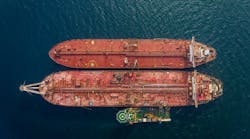By OGJ editors
HOUSTON, Sept. 2 -- The federal onscene coordinator for the oil spill response is developing a comprehensive subsurface oil monitoring plan to help scientists from various institutions and agencies measure any oil remaining in the Gulf of Mexico following the deepwater Macondo well blowout.
“To date, there have been over 27,000 samples taken in over 182,000 miles in the Gulf of Mexico, but my goal is to bring all this together and get it into one coherent picture that both the government and the academic community can look at, understand, discuss, and draw conclusions from,” said National Incident Commander and retired US Coast Guard Adm. Thad Allen.
He appointed USCG Rear Adm. Paul Zukunft to meet with researchers from various universities to discuss how to develop a central information base.
Scientists from the US Geological Survey, Department of the Interior, and National Oceanic and Atmospheric Administration previously developed an oil budget calculator to determine what happened to the oil from the 4.9 million bbl leak, of which BP captured 800,000 bbl.
Zukunft met Sept. 1 with Louisiana Gov. Bobby Jindal and Louisiana’s coastal parish presidents to discuss state and local operational transition plans, vessel decontamination, subsurface monitoring, and the ongoing claims process.
After the relief well is completed to permanently kill the Macondo well, Zukunft said federal authorities will focus on working with state and local authorities to restore the coast and to continue oil monitoring efforts.
During a joint news conference from Schriever, La., with Zukunft, Jindal said it’s too early for definitive answers about subsea oil. “We need to have additional sampling,” he said.
Jindal called upon BP PLC, operator of the Macondo well, to finance a 5-year seafood testing program to assure the public that it’s safe to eat Louisiana shrimp and fish. The state of Louisiana also would like BP to agree to an option for 3-year extensions of the proposed seafood testing program.
